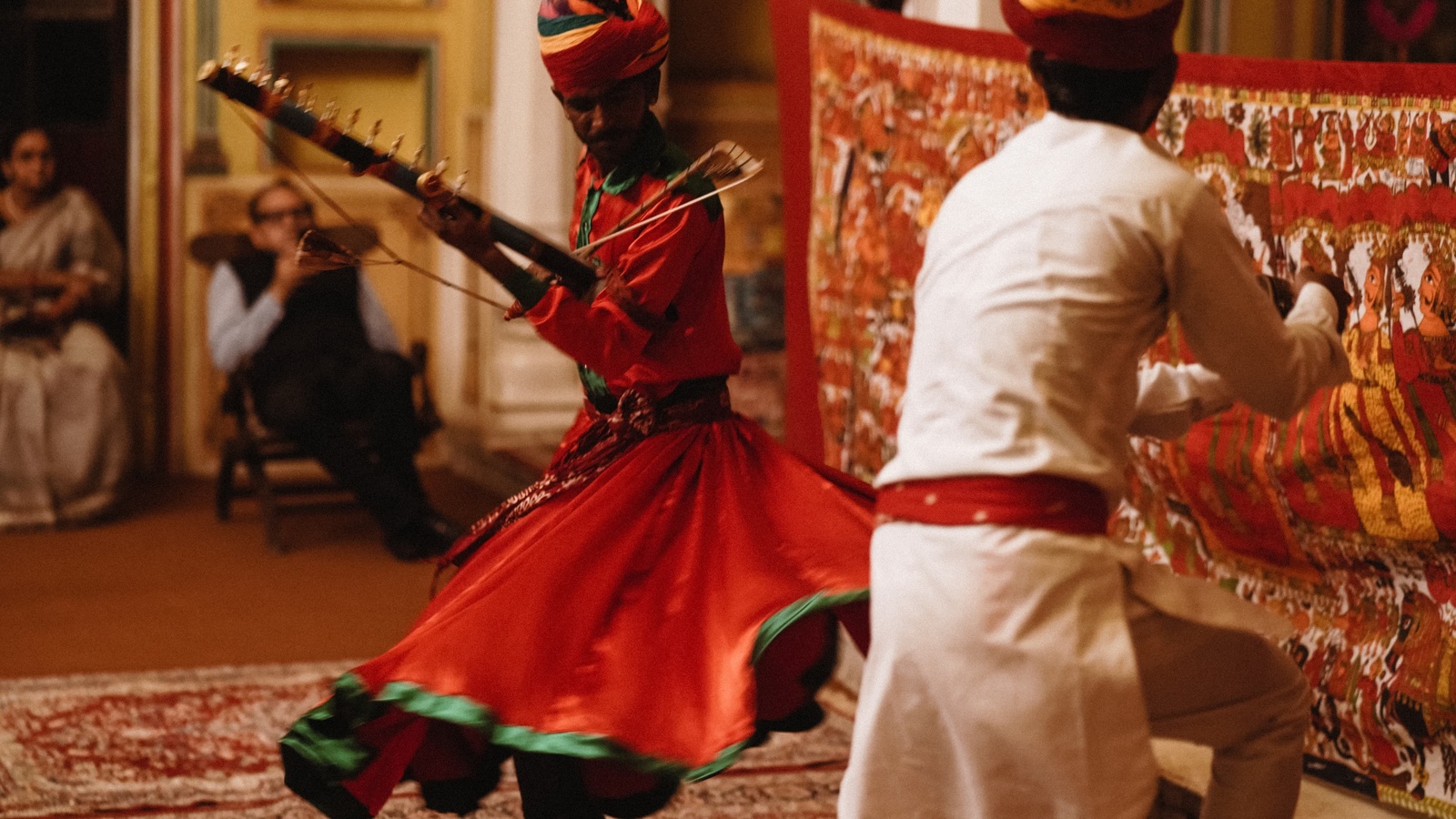
Pabuji Ki Phad

Reimagining Pabuji ki Phad: A Digital Renaissance of Rajasthan’s Epic Art
A digital revival reimagines Pabuji ki Phad, transforming the traditional Rajasthani scroll performance into an immersive VR experience that honors its oral roots while opening new pathways for cultural continuity, community inclusion, and artistic innovation.
Written by Sakshi VirmaniThe stage is set. Bhopa Bablu tunes his Ravanhatha—a violin-like folk instrument—while his brother Sitaram lights the ritual lamp. A one-foot-long scroll, alive with nearly a hundred human figures, horses, elephants, and five-legged camels painted in vegetable dyes, forms the backdrop. As the ritual unfolds, Bablu, Sitaram, and their mother Sohini raise their voices in unison—an inheritance of devotion and tradition—recounting the legendary tales of Pabuji. Their melodies are intimately tethered to the phad.
For centuries, the vibrant tradition of Pabuji ki Phad has thrived as a captivating fusion of visual storytelling and oral performance, bringing to life the heroic exploits of Pabuji, a revered folk deity of Rajasthan. Celebrated for his selfless sacrifice to protect cows in the 14th century, Pabuji’s epic is rooted in the arid lands of the western Thar Desert, spanning regions including Jaipur, Shekhawati, Jodhpur, and Jaisalmer.
But what happens when this age-old tradition encounters cutting-edge technology?
Enter Thorr Collective—a dynamic group of artists, ethnographers, and researchers—who, in collaboration with IIT Jodhpur, are breathing new life into this Rajasthani folk art through an ambitious, multi-platform initiative.
At the heart of their project lies a digital VR game that reimagines Pabuji ki Phad for contemporary audiences while simultaneously extending its narrative into comic books, visual media, and live performances. This innovative approach does more than preserve a cultural legacy—it transforms it, making it immersive and interactive for a new generation.
Sakshi Virmani speaks with Thorr Collective founder Ms. Mimansha Charan and Dr. Ayla Joncheere, Professor of Cultural Anthropology and Performing Arts at IIT Jodhpur, about their visionary endeavor.
What is Thorr Collective?
Thorr Collective is a group of artists, researchers, designers, performers, and cultural practitioners who are deeply committed to rethinking the relationship between contemporary life and vernacular knowledge systems. We came together out of a shared restlessness—an unease with how Rajasthan’s robust cultural practices are often reduced to surface representations, displayed as decorative or performative artifacts, while the communities that hold and embody these traditions are left out of the frame. We felt the urgency to create work that does not simply preserve or document but listens, collaborates, and co-imagines new pathways for these traditions to live, breathe, and transform—on their own terms.
We are interested in how centuries-old ritual forms, oral traditions, and local cosmologies can be refracted through contemporary mediums—not for novelty, but to create new possibilities of connection, understanding, and continuity. Our approach resists extraction. We do not study from a distance; we sit, walk, mourn, dream, and create alongside those whose lives are shaped by these traditions.
Our projects move across disciplines—game design, performances, community archiving, publishing, and pedagogical tools—but are united by a slow, relational methodology. We prioritize time: time for trust, for returning to the same place again and again, for holding silences, and for allowing uncertainty to guide the work. We believe in the intelligence of the land and the people who know it intimately.
We are also deeply invested in questions of access and justice. Who holds the narrative? Who profits from reinterpretation? How can new technologies be rerouted to serve the custodians of old knowledge systems, rather than displace them? In each project, we attempt to model different ways of working—equitable, transparent, and shaped by care.
Ultimately, Thorr is not a finished idea. It is an unfolding— a listening practice. We are here to learn what it means to make work that is tender, situated, and responsible. Our goal is to construct cultural futures that do not aim to supplant or stagnate traditions, but rather to allow them to evolve and evolve with dignity over time.
What inspired Thorr Collective to reinterpret Pabuji ki Phad using digital mediums?
The seed of this project was discomfort. We were seeing Phads reduced to décor items and Bhopas reduced to props playing a couple of standard tunes in commercial settings—detached from the oral performance and ritual context that gives them life. Pabuji ki Phad is not simply an artwork. It is a living performance, an all-night storytelling ritual performed by Bhopas who embody the story through voice, song, and memory. It’s a community event, an act of devotion, and a re-enactment of history all at once.
We wanted to respond to the rupture that occurs when a form is displaced from its context. But rather than return to nostalgia, we began asking—could a digital medium reintroduce the interactivity, immersion, and presence that the Phad tradition originally carried?
The idea of a game came from this line of thought. What if instead of looking at the scroll, you could walk inside it? What if the viewer became a witness, a participant— someone moving alongside the divine horse Kesar Kalmi, listening to the Bhopa’s voice, making choices, grieving loss? We saw the present as more than an adaptation—it was an invitation to re-enter the myth with reverence, but through new tools.
How does the VR game capture the essence of the original folk art?
The VR game doesn’t try to replicate the Phad scroll or performance as it is. Instead, it tries to carry its inner rhythm, symbols, and emotional arcs into a spatial, sensory form. One of the key principles of the Phad is its performative unfolding—it is not “read” but lived through song, gesture, and voice. In the game, the Bhopa’s voice remains central. He doesn’t just narrate—he invites, chants, pauses, and invokes. The pacing of his voice becomes the pacing of the game.
Visually, we worked with the symbolic iconography of the Phad painting tradition, rendering it into layered, animated environments that retain the feel of textures and stylized forms. There is a surreal, floating quality to the world—shaped not by realism but by the logic of myth.
We also focused deeply on sound. The ambient landscape of the game is filled with field recordings: desert winds, footsteps on sand, and the distant echo of a ravanhatta. These elements ground the player in the same atmosphere that surrounds a live Phad Baanch—night, desert, story.
What aspects of traditional Phad storytelling were retained, and what had to be adapted?
We retained the structure of the Pabuji epic: the divine birth, the vow to retrieve the mare, the journey across lands, the betrayal, the battles, the horse’s sacrifice, and finally, Pabuji’s ascent into divinity. This moral and emotional arc is essential—it’s not just a plot but a worldview.
We also retained the presence of the Bhopa. In the game, the player doesn’t become Pabuji. Instead, they become a wandering listener, someone piecing the story together through ruins, encounters, and songs. The bhopa is a guide, a narrator, and sometimes a companion.
The Phad itself is non-linear—diachronic in nature—where events coexist across layers of time, memory, and meaning. Our adaptation embraces that fluidity. The game invites players to experience the story of Pabuji not from a fixed timeline but through a third-person POV—an entity detached from chronology yet immersed in the world.
Here, narrative is uncovered through spatial wandering. One might step into a shrine before understanding the vow that sanctified it or stumble upon a battlefield long before grasping the betrayal that ignited it. This mirrors the way oral traditions often linger in our minds—not as a sequence, but as fragments, echoes, and intuitive leaps. Memory, after all, is not linear; it circles back, reframes, and reveals meaning only when you’re ready to see it.
How did the collaboration with IIT Jodhpur come about? What was their role in the technological execution?
The collaboration with IIT Jodhpur emerged from shared concerns. As an institution deeply committed to exploring the confluence of art and technology, their Department of Design had already been working at the intersection of immersive technologies, education, and cultural memory. When we approached them with the idea of a playable Phad, they were intrigued—not only by the conceptual and ethical questions it raised around embodiment, memory, and reverence in digital storytelling, but also by the technological processes behind developing such a game.
Their curiosity extended to both the research and the mechanics—how narrative structure could be adapted into interactive environments, how traditional visual language could be encoded, and how VR might serve as a vessel for layered, emotionally rich experiences. Their team helped build the VR environment, design interactions, and translate visual cues into code.
We spent months discussing not just functionality but meaning—how to make a game where the goal isn’t to win but to understand. Where grief, devotion, and oral tradition are part of the player’s journey. They didn’t come in as technicians but as translators—helping bridge the distance between an ancient form and a new medium without flattening either.
What were the biggest challenges in adapting this folk tradition into a digital format?
The biggest challenge was ethical, not technical. Folk traditions are not open-source content. They are held in memory by real people—often marginalized, often economically precarious—who depend on these traditions for livelihood and cultural identity. So, every step of the project had to be built on respect, dialogue, and shared agency.
We also had to grapple with the limits of digital experience. The Phad performance is full-body: it involves voice, gesture, call-and-response, and physical proximity. A game can never fully replicate that. But it can open new dimensions of intimacy—if designed with care.
Another challenge was interpretation. The Phad is full of metaphors, symbolic actions, and spiritual resonances. How do you code a moment of divine recognition? How do you let the player feel the weight of a vow or the sorrow of a horse’s death? These required us to slow down, to resist the speed and spectacle of typical digital design, and to create a space for silence and stillness.
Were there concerns from traditional artists or communities about this transformation?
Yes, and rightfully so. In early meetings, there were questions: “Will this replace the traditional format?” “Will the game take the story away?” These are not technical concerns—they are questions of dignity, of livelihood, of authorship.
Rather than dismiss those fears, we centered them. We invited Bhopas and Bhopis into the process as co-creators. Their songs were recorded, their feedback shaped the gameplay, and their understanding of the epic helped us avoid superficial interpretation.
We also emphasized that the digital form is not a substitute. It’s an extension. The game is not the performance—it is an echo, an offering, something that invites players to seek out the real thing. In fact, several museum versions of the project now include live performances by Bhopas, where the game and the ritual co-exist.
What does this project signify for the future of other Indian folk arts in the digital age?
It suggests that digital tools, if used with care, can become vehicles for continuation—not just preservation. They can hold complexity, create access, and even generate new forms of devotion. But only if the artists, the keepers of the tradition, are involved—not just as subjects, but as authors, co-owners, and teachers.
This project also questions the idea of innovation as rupture. Sometimes, the most radical thing technology can do is slow us down, return us to listening, and make space for embodied knowledge in a disembodied world.
For other folk traditions, it opens up a path—not towards digitization for its own sake, but towards meaningful recontextualization. A path that respects rhythm, voice, and context.
Can such initiatives help revive dying art forms and bring financial sustainability to traditional artists?
Yes, they can—but only if the economics are woven with the same care as the experience itself. Too often, traditional artists are invited in as symbols—brought to the table during research for their knowledge, lineage, and authenticity, only to be excluded when it comes to authorship, ownership, and revenue. This extractive model cannot persist—not if we are serious about cultural continuity and justice.
In this project, we are building a hybrid model that rethinks value at every stage. Bhopas are not just performers; they are knowledge-bearers, co-authors, and interlocutors of a living tradition. They are compensated as consultants, as teachers, as performers—and a share of any future earnings flows directly back to the communities that have held and sustained this oral archive for generations.
Sustainability, then, cannot be reduced to charity. It must be rooted in participation, in economic dignity, and in long-term platforms for expression, experimentation, and growth. Only when traditional knowledge systems are given space to evolve on their own terms—within and beyond the digital—can these projects become more than fleeting artistic gestures. They become ecosystems: alive, adaptive, and accountable to the communities from which they emerge


